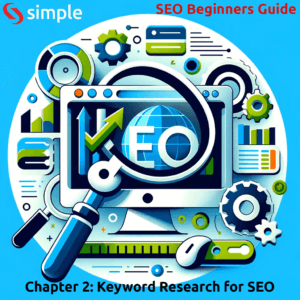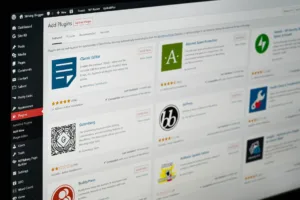On-Page SEO is a cornerstone of effective search engine optimization. By focusing on On-Page SEO Techniques, you can significantly improve your website’s visibility and ranking on search engines like Google. This comprehensive guide will delve into essential aspects such as Content Optimization, Meta Tags, and creating SEO-Friendly Content.
On-Page SEO
Understanding On-Page SEO
On-Page SEO refers to the practice of optimizing web pages to rank higher in search engines. It involves aligning page-specific elements like content, meta tags, and images with your target keywords. For a deeper understanding, visit our detailed explanation at Simple IT SEO Guide.
The Role of Meta Tags in SEO
Meta tags are snippets of text that describe a webpage’s content; they don’t appear on the page itself but in the page’s HTML code. These tags are critical for SEO as they help search engines understand what your webpage is about, and they can also influence how your page is displayed in search results. Here’s a detailed breakdown of various types of meta tags:
- Title Tag: This is one of the most important meta tags. The title tag specifies the title of your web page and is displayed on search engine results pages (SERPs) as the clickable headline for a given result. It is crucial for SEO, usability, and social sharing. The title tag should include your primary keyword and be both concise and informative.
- Meta Description Tag: This tag provides a brief summary of the page content. While it doesn’t directly impact search engine rankings, it is vital for user click-through rates. A well-written meta description can make your webpage stand out in SERPs. This tag should also include relevant keywords and be engaging enough to encourage users to click on your link.
- Meta Keywords Tag: Once important for SEO, this tag allowed publishers to provide search engines with a list of relevant keywords. However, it’s now largely obsolete as Google and other major search engines no longer use meta keywords in their ranking algorithms due to past abuse and keyword stuffing.
- Header Tags (H1, H2, H3, etc.): These aren’t traditionally considered meta tags, but they play a similar role in organizing and providing context to your website’s content. Header tags are used for formatting purposes and to highlight the structure of your content. They help search engines understand the important sections and keywords in your content.
- Robots Meta Tag: This tag tells search engines what they should do with your page: whether they should index it, follow the links on it, etc. For example, if you don’t want a page to appear in search results, you would use the content=”noindex” tag.
- Viewport Meta Tag: Essential for mobile web design, this tag tells the browser how to control the page’s dimensions and scaling. For instance, it ensures your page is displayed correctly across all devices (responsive design).
- Open Graph and Twitter Cards: These aren’t used by search engines for ranking but are essential for social media sharing. Open Graph meta tags (used by Facebook) and Twitter Card meta tags allow you to control how your content appears when shared on social platforms.
- Canonical Tag: This tag is used to specify the preferred version of a set of pages with highly similar content. It helps prevent problems caused by duplicate content appearing on multiple URLs.
- Hreflang Tag: For multilingual or multi-regional sites, this tag tells the search engine which language you’re using on a specific page, so the search engine can serve that result to users searching in that language.
In summary, meta tags play a crucial role in SEO and user experience. They help search engines understand and categorize your page’s content and influence how your pages are presented in SERPs. Proper use of meta tags can contribute to the effectiveness of your SEO strategy.
Crafting SEO-Friendly Content
Content is king in the world of SEO. SEO-friendly content means creating articles, blogs, and other written materials that are optimized for search engines while still providing value to your readers. This involves using relevant keywords naturally, ensuring the readability of your content, and organizing your content with proper headings.
Optimizing Headings and Subheadings
Headings and subheadings play a crucial role in organizing your content and making it easier for readers and search engines to navigate your site. Using keywords in these headings can also help improve your SEO performance.
The Importance of Content Optimization
Content optimization goes beyond just inserting keywords. It involves optimizing the entire content to ensure it’s engaging, informative, and provides a good user experience. This includes using internal links to other relevant content on your site, optimizing images and videos, and ensuring your content is up-to-date.
Utilizing Internal and External Links
Internal links are links that go from one page on a domain to a different page on the same domain. They are commonly used in main navigation. External links, on the other hand, are links from your website to a different website. Both are vital for On-Page SEO. For more insights, explore our comprehensive articles in the SEO Beginners Guide.
External Resources
For an in-depth understanding of meta tags in SEO, here are some valuable resources you can explore:
- SEOwind’s Ultimate Guide to SEO-Friendly Meta Tags for 2024: This guide offers a comprehensive look into different types of SEO meta tags, including best practices, common mistakes, and their benefits. It’s a resource aimed at keeping you at the forefront of efficient online growt.
- 99signals’ Meta Tags for SEO: The Definhttps://www.99signals.com/meta-tags-seo/itive Guide (2023): This guide focuses on creating compelling meta titles, perfecting meta description tags, and appropriately using the robots meta tag. It covers best practices for each type of tag and common mistakes to avoid-.
- Ahrefs’ Meta Tags for SEO: A Simple Guide for Beginners: Here, you can learn about the six most important meta tags for SEO, including meta title, meta description, meta robots, meta refresh redirect, meta charset, and meta viewport. The guide offers insights on how to effectively use these tags for improving your SEO.
These resources offer a rich source of information and best practices on meta tags for SEO, helping you stay updated and effectively optimize your website.
Conclusion
On-Page SEO is a fundamental aspect of digital marketing that can significantly boost your website’s visibility and search engine ranking. By focusing on elements like meta tags, content optimization, and SEO-friendly content, you can create a more effective and engaging online presence. Remember, SEO is an ongoing process, so keep refining your strategies based on the latest trends and algorithms.
For more detailed insights on each aspect of On-Page SEO and to stay updated with the latest trends, visit our SEO Section.




Pingback: SEO Beginners Guide: Mastering the Essentials of Search Engine Optimization in 9 lessons - Simple IT